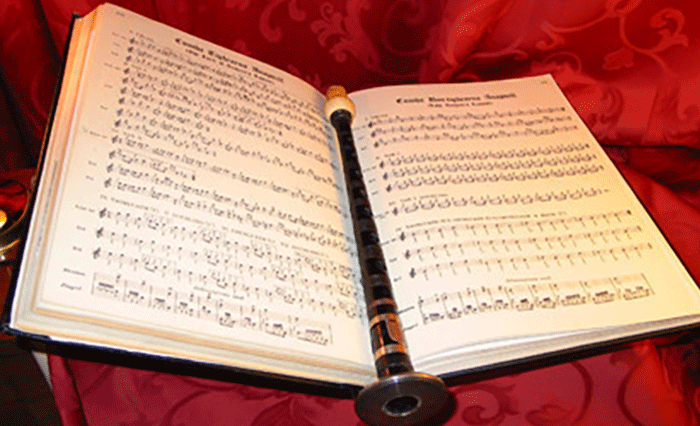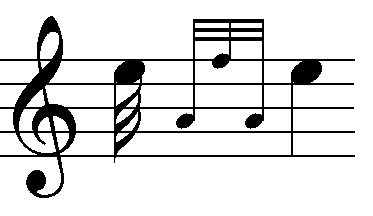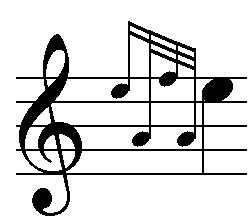
Reader Paul Eschenburg in Plymouth, Michigan: ‘A question from the trenches…I have always played the dre movement as instructed by my tutor.
‘When I mentioned to him that Jimmy McIntosh espouses the pre-1895 version as described in his ‘Ceol Mor in the Balmoral Tradition’, page 29, I was just told ‘we are not going to do it that way’.
By Robert Wallace
‘Jimmy is very adamant regarding this movement as evidenced by his EUSPBA instructional video on embellishments.
‘In your piobaireachd Tutor 3 you commence the dre with with an E gracenote on low A, which Jimmy disagrees with, as best I can tell, calling it playing down, versus playing an E first, thus, playing up.
‘Every other tutor book I have referred to agrees with you. Is there any explanation for this or is it just evolution?
‘I’m just trying to understand how it is that current technique appears to vary with Jimmy and, maybe, the Bobs as well.
‘I have great respect for Jimmy McIntosh. I am not on a mission to question, just seeking a ‘why it came about’.’
Thanks for that Paul. Firstly, Jimmy is not wrong but I recommend learning the dre and edre as per Tutor 3:

Once mastered you can play it with a slightly bigger E gracenote, particularly when coming from a bottom hand melody note. (It will be naturally longer when playing edre as the finger configuration from top hand notes F, G and high A dictate this.)
You will see in the book that I also have the music written out with the first E written as a demisemiquaver note as opposed to a demsemiquaver gracenote. This is in line with what Jimmy means:

or

The Tutor 3 approach covers both the following requirements:
1 To make the distinction when playing the dre as a standalone movement, and
2 The EF gracenote sequence to low A when playing the crunluath.
The crunluath definitely must have the distinct E and F gracenotes played to low A. Extending the E gracenote here to a full note – albeit a short one – will give the crunluath a flappy, unrhythmical sound:
This is especially critical in the fosgailte and a mach crunluaths. The end sequence of these movements MUST be thought of as gracenotes to low A.
So in summary, learn the E,A,F,A gracenote sequence as per two active gracenotes (the E and F) and two passive gracenotes (the low As). This will slot neatly into your crunluath.
When we come to play the dre it is then very easy to extend, ever so slightly, the first E. Putting the beat onto this very short first E helps get the correct effect:




















Hi Rab!
I guess in both an effort to muddy the waters, and in an effort to test my understanding against the masses, I find it helpful to think of Edres (and Dres) like Darados. Similar to the D and C “gracenotes” in a darado, there needs to be a bubbly, rolling, rhythmic sound to things.
In some ways, I see J. McKintosh’s critique to fit in with this, where if the E and F “gracenotes” in an Edre get too chippy, you begin to get too much toward the territory of some kind of doubling on Low A.
All that said, I find it easier to wrap my head around it describing it as rounded gracenotes, rather than a short E with a grip-like movement after it.
Enjoyed the article, and it’s always fun to see so many interesting in drilling down to the core of a specific part of piping. As long as it’s in service of the melody, though, I think you can get away with “just play the thing”!
To tell the truth, I am so glad that I came across your article because it is one more opportunity to become closer to music and master some techniques in playing the pipe. I would like to say that the whole article is an art and I was able to feel subtle. Of course, it is not so easy to become a professional piper, but if people read more such articles, they will increase chances to achieve it. Without any doubts, it is really important to pay attention to all details in this process and take them into account in order to move forward. From my point of view, learning the E,A,F,A gracenote needs to have a paramount importance because it is an integral part of creating splendid music and of becoming more confident in your playing.
Great discussion. And great points from Robert about the Crunluath A Mach and the Fogailte.
I think Beloved Scotland is a great example for what Jimmy was talking about, to balance all the grip and throw movements rhythmically.
There’s a couple passages in the 3rd line of the Urlar, with grip and throw movements on different notes. See here: https://firstpibroch.files.wordpress.com/2022/03/beloved-scotland.jpg
Cheers,
Chris
Excellent article and excellent demo sound clips!
There is a progression from how one first directs their fingers when learning a complex embellishment to how one eventually integrates technique into the music so that the technique serves to enhance the rhythm and flow of the tune and not disturb such.
When Jimmy would teach the crunluath, he would sometimes use a vocable to help students hear the rhythm of the components. CHE(long theme note)-AH-Pen- DECK-Toe-ME. Clap syllables to “appendectomy”.
In Robert Wallace’s Bagpipe Tutor#3 Piobaireachd, pg. 5, Wallace emphasizes: ‘the grace notes fall into place and we can count a very steady “1-2-3-4-5″. This is the essence of a good crunluath. If we crush any of the gracenotes, or fail to give them absolutely the same length of time, we will never achieve the rippling movement we want.” Audio samples provided.
As Wallace states, pg. 5, “A good crunluath is essential if you are to become a good piobaireachd player. Without it your study of ceol mor will be forever hampered by technical deficiency”.
An interesting article. As a mature Piper I had to revisit my whole edre technique and used Mr MacKintosh’s videos to address the problem. I find that Mr Wallace’s writing of the first E as a demi semi quaver note as opposed to a grace note is very helpful and shall incorporate this visualisation into my practise as it definitely concurs with the late Pipe Majors guidance.